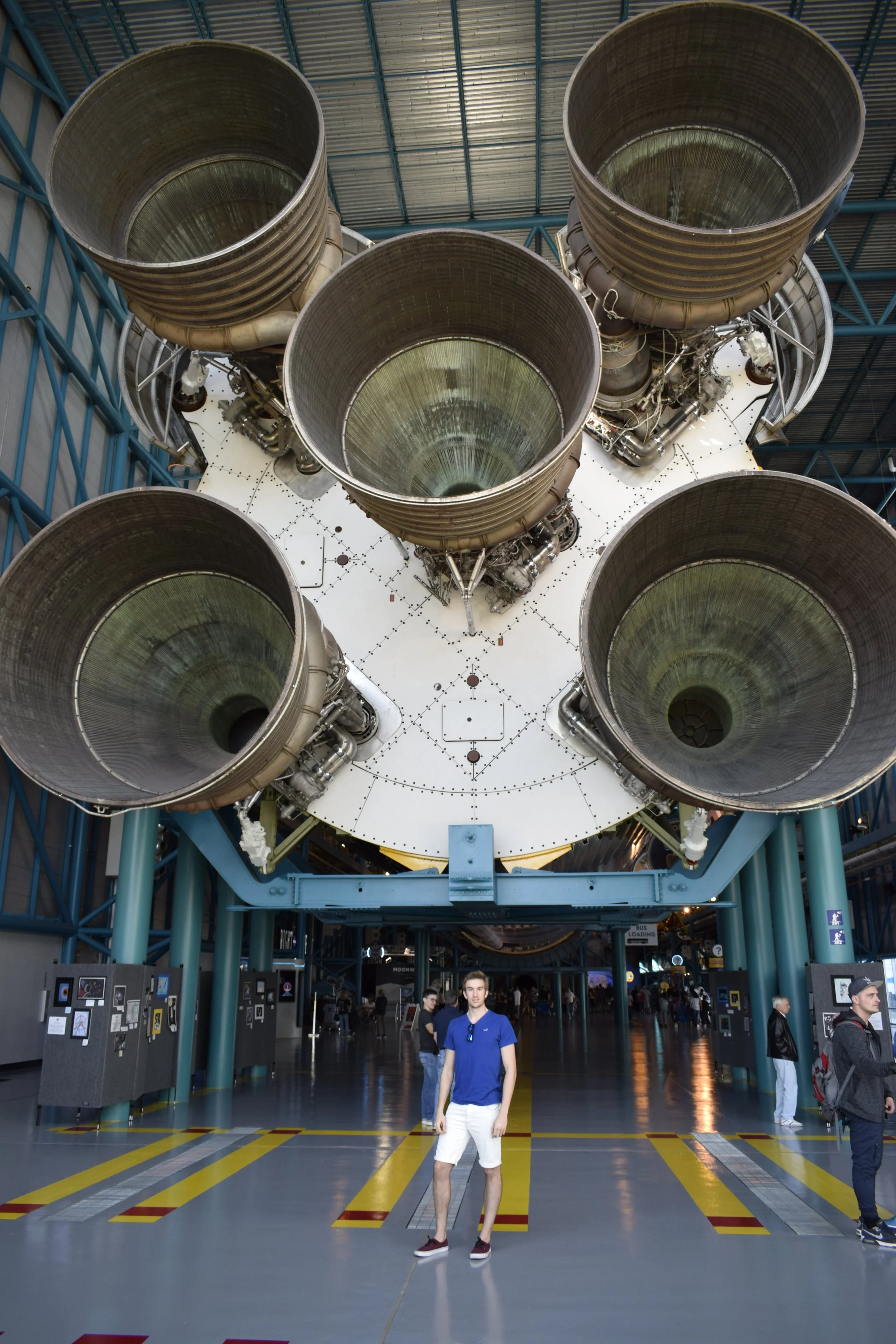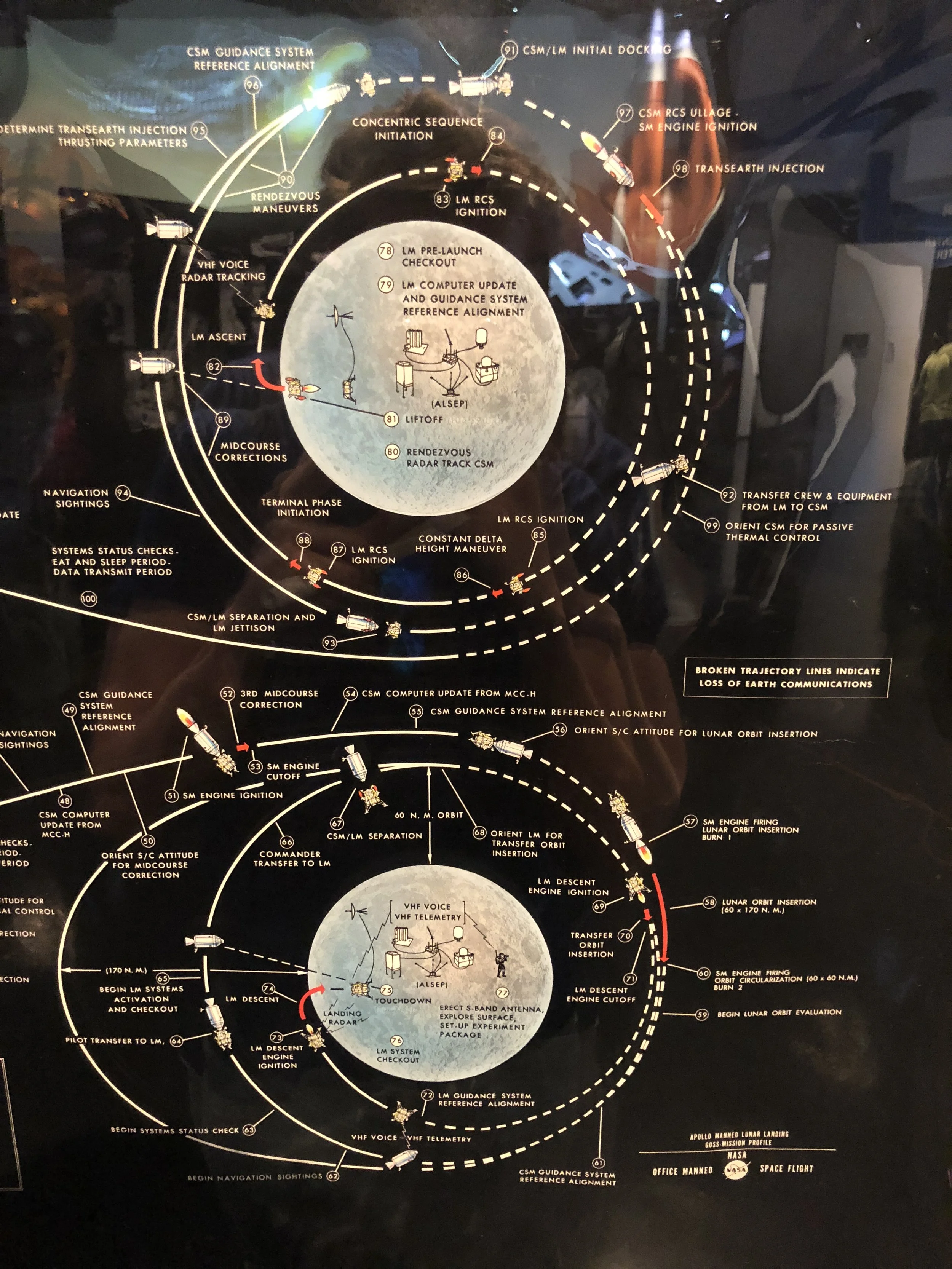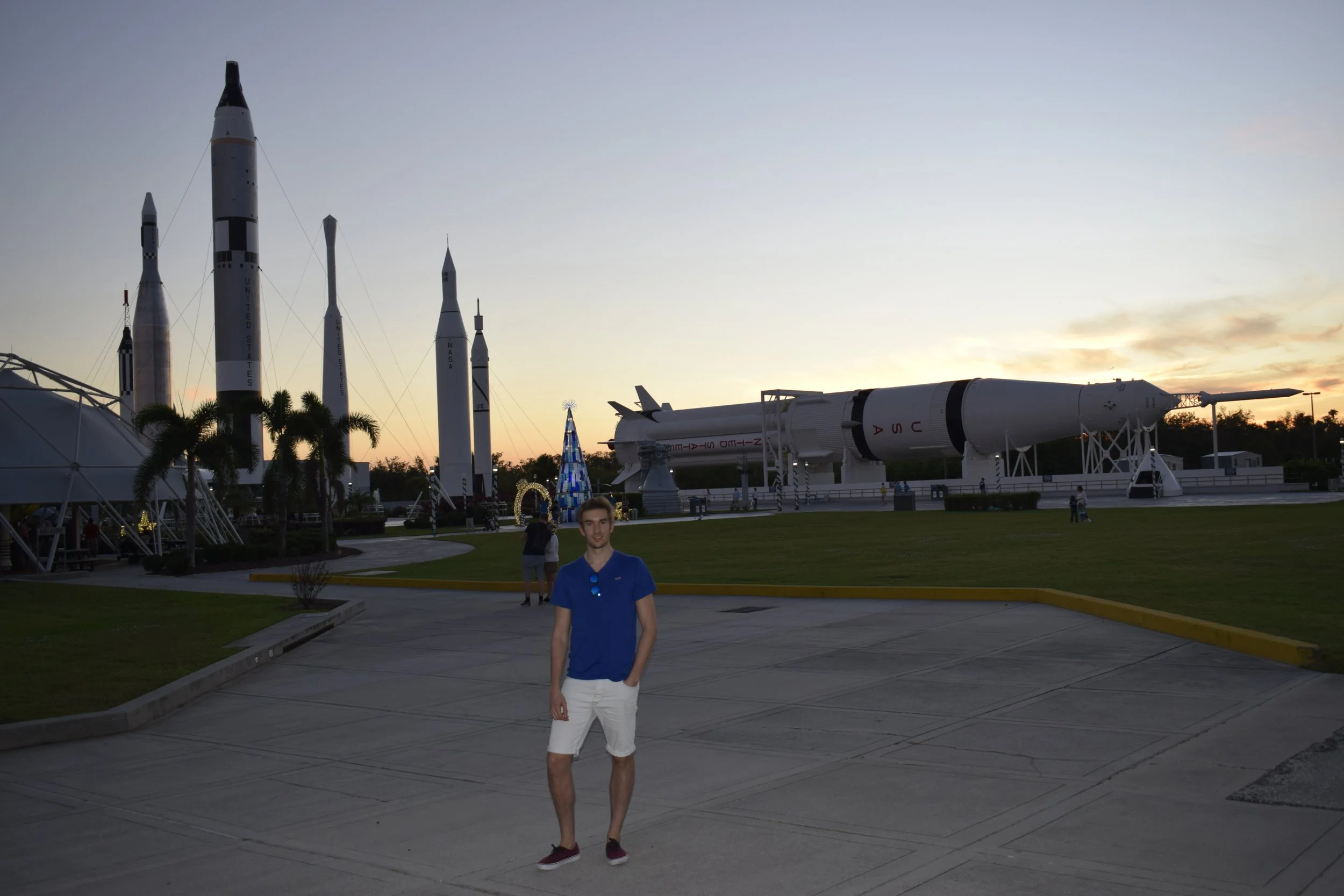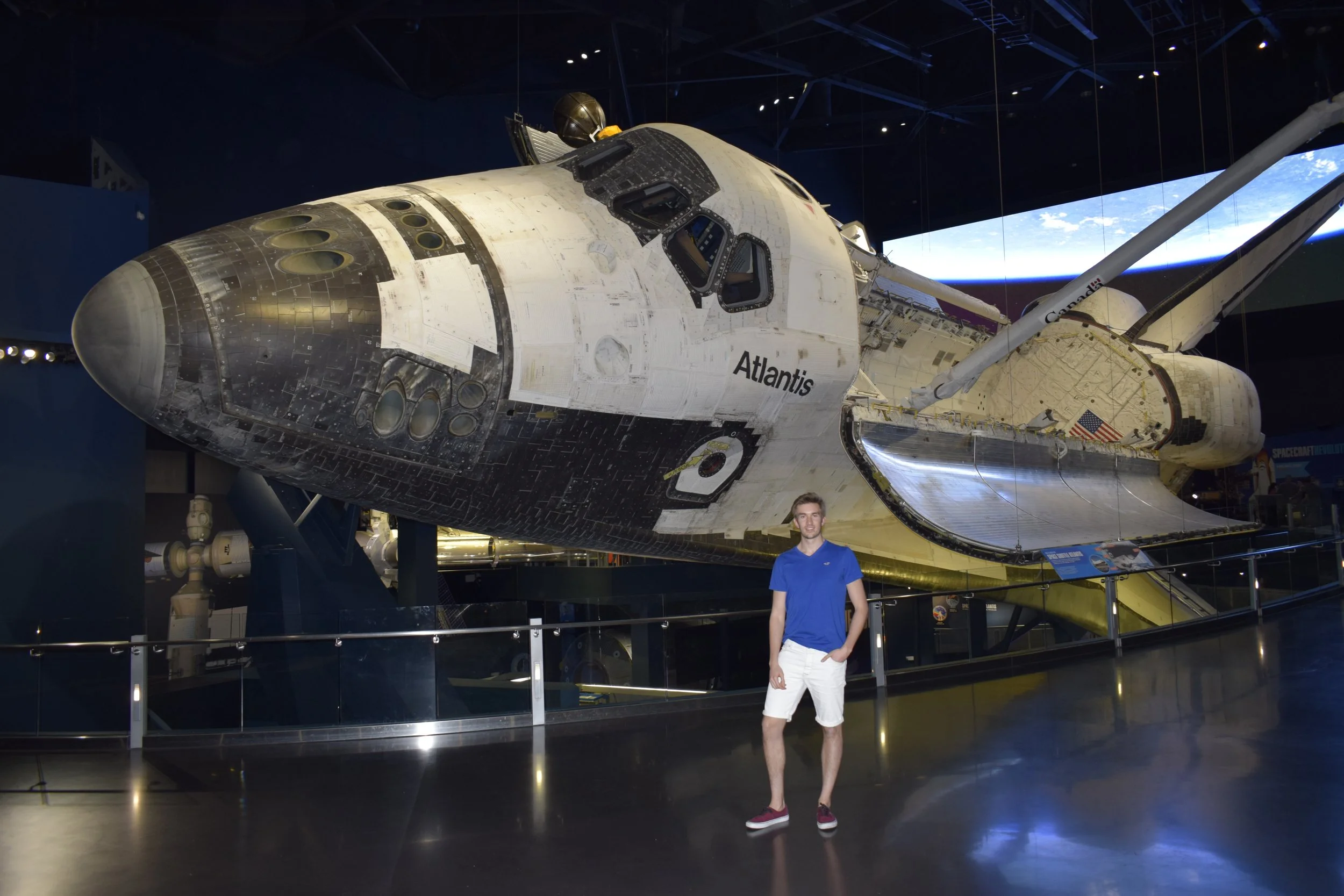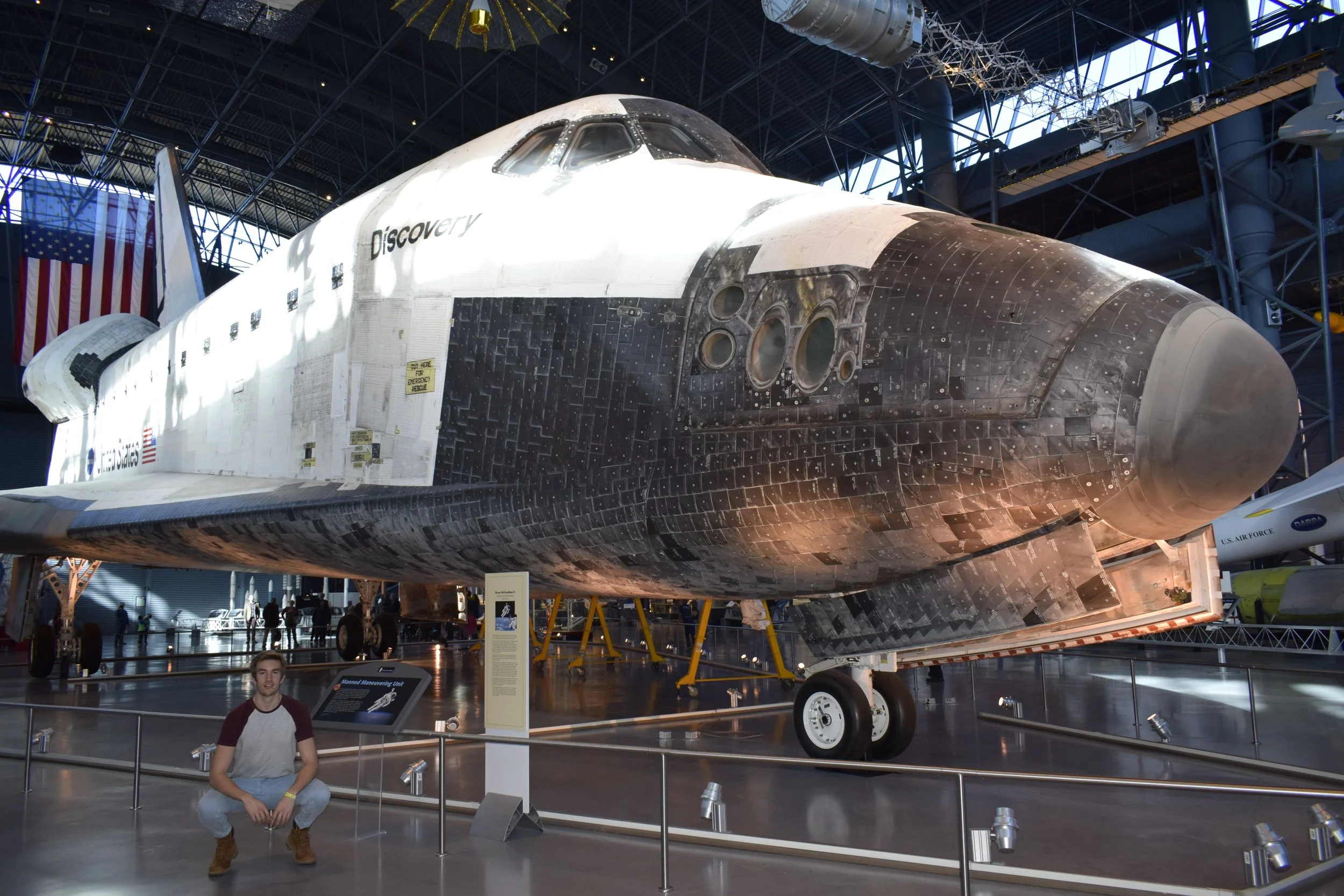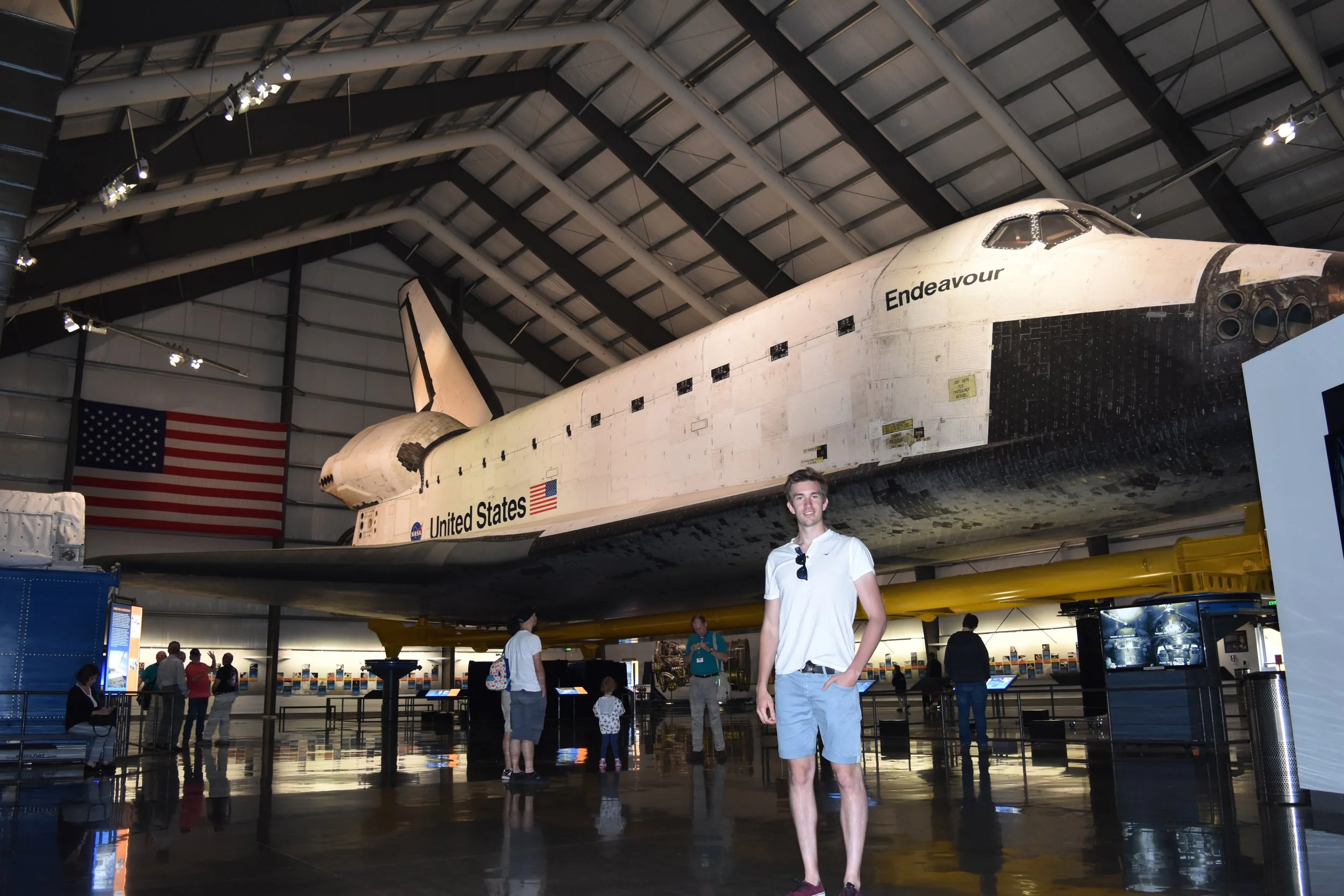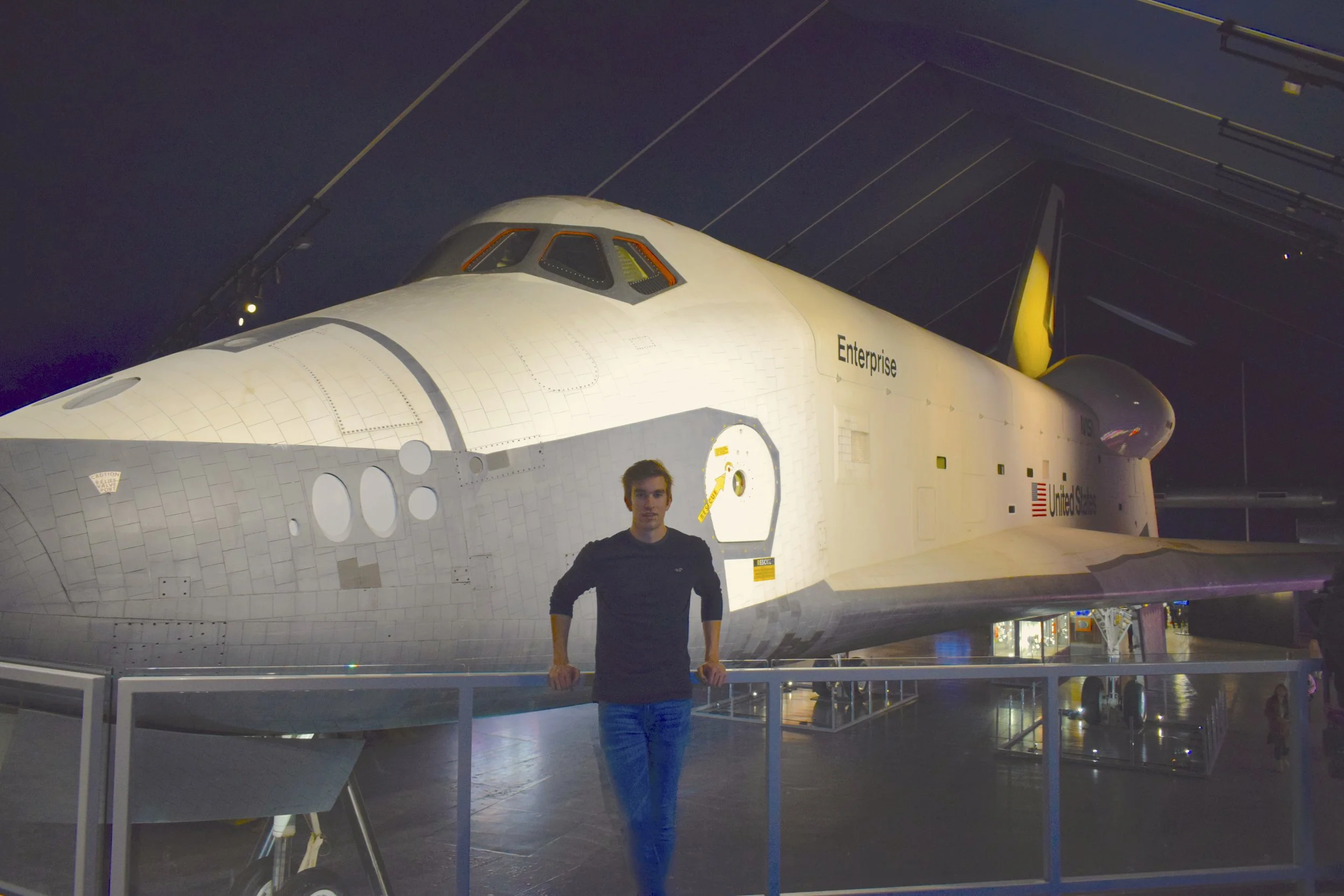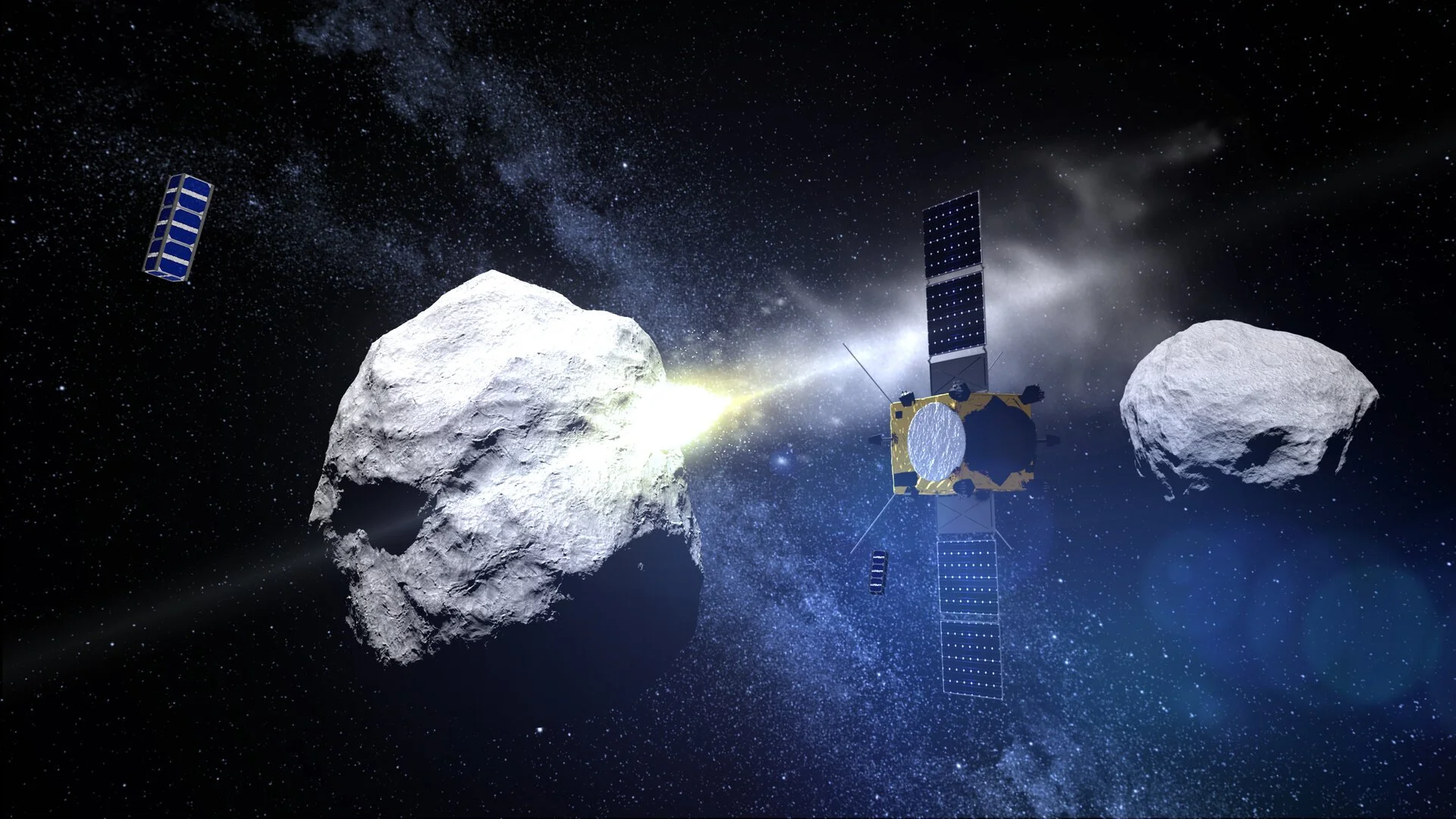
Design of a Spatial Rendezvous Mission to the Asteroid Bennu
PROJECTS · MATH, PHYSICS & ENGINEERING
Math, Astrophysics
500h
Jan. 2018 - Aug. 2018
INTRO
PROJECT DESCRIPTION
The aim of this work is to present the preliminary design of a rendezvous mission targeting asteroid Bennu, a potentially hazardous object (PHO) for Earth, to subsequently alter its orbit via the kinetic impactor method. The mission design is approached within the framework of the two-body problem, disregarding external perturbations.
The study begins with a preliminary determination of Bennu’s orbit using Gauss, Gibbs & Lambert methods. The resulting orbital elements exhibit relative errors below 5%.
SKILLS
FIELDS OF EXPERTISE
Research:
Math/Physics:
Coding (MATLAB):
Scientific Writing:
Complexity: ★★★★☆
Tools: MATLAB
Project Type: BSc. Thesis
ABOUT
ABSTRACT
The aim of this work is to present the preliminary design of a rendezvous mission targeting asteroid Bennu, a potentially hazardous object (PHO) for Earth, to subsequently alter its orbit via the kinetic impactor method. The mission design is approached within the framework of the two-body problem, disregarding external perturbations.
The study begins with a preliminary determination of Bennu’s orbit using Gauss, Gibbs, and Lambert methods. The resulting orbital elements exhibit relative errors below 5% when compared to JPL data, with a Minimum Orbit Intersection Distance (MOID) of 0.0030 AU, classifying Bennu as a potentially hazardous asteroid (PHA).
For the rendezvous maneuver design, a prior analysis of the relative motion and energy characteristics of Bennu and Earth was conducted. This analysis identified the optimal mission timeframe as being from November 12, 2022, to August 29, 2023. The final selection of the rendezvous trajectory was achieved through the use of porkchop plots, which minimized the launch energy (C3) to 0.73 km²/s² while maximizing the arrival velocity at Bennu to 7 km/s.
The transfer orbit parameters were calculated using the “Patched Conics Approach”. Starting from a 200-km Earth parking orbit, a ΔV of 3.256 km/s is required to exit Earth’s sphere of influence and reach Bennu via a heliocentric transfer orbit.
To achieve Bennu’s orbital deflection, the kinetic impactor method was applied, initially assuming an ideal inelastic collision (β = 1). This scenario resulted in MOID variations of 0.000012 AU for an impactor mass of 6000 kg traveling at a velocity of 7 km/s. By optimizing impact factors, improvements of up to 0.00003 AU were achieved with optimal relative angles of 170° and higher beta factors (β = 10).
Project Tags:
Astrodynamics
Space Mission Design
Orbit Determination
Two-Body Problem
Space Rendezvous
Asteroid Deflection
0
INTRO
Problem Understanding
Astronomy, defined as the science devoted to the study of celestial bodies in the universe, has been intertwined with humanity since the dawn of recorded history. From the earliest traces of human existence when mere observation of the skies inspired awe and wonder, to the development of scientific theories in prehistoric times and the groundbreaking studies of the universe by figures such as Copernicus, Galileo, and Newton, humankind has demonstrated a profound and enduring desire to understand the cosmos.
Today, humanity has reached a stage where we possess extensive scientific knowledge about the workings of our Solar System and the celestial bodies within it. The driving force behind the continuous development of astronomy remains the same as it was in our earliest days: survival. While curiosity about the universe fuels our quest for knowledge, the study of outer space and its phenomena also enables us to better understand our origins and explore potential means of expansion and survival to ensure the long-term progress of our species. This makes the study of Solar System bodies and their associated phenomena especially important.
Among the celestial bodies in our Solar System, asteroids stand out as particularly fascinating from both scientific and research perspectives. Not only do they serve as invaluable sources of information about the origins of our universe, but their orbital characteristics also pose a potential collision threat to Earth.
For this reason, the study of asteroid deflection missions is of critical importance. These missions aim to prevent asteroid impacts on Earth, which could have catastrophic consequences. Understanding and mitigating such risks are essential steps in safeguarding the future of our planet and its inhabitants.
INTRO
Research Objectives
The objective of this study is to design a rendezvous mission targeting the asteroid Bennu, which poses a potential hazard to Earth, with the goal of altering its orbit using the kinetic impactor deflection method.
The mission will be developed within the framework of the two-body problem, assuming an isolated system free from external perturbations. To achieve this objective, the study will proceed as follows:
• Preliminary calculation of Bennu’s orbit based on ground-based observations.
• Orbit propagation of Bennu over time.
• Approximation and visualization of the orbits of Bennu and Earth, and the Minimum Orbit Intersection Distance (MOID).
• Analysis and calculation of the most suitable rendezvous mission trajectory between Earth and Bennu.
• Investigation of the kinetic impactor method as a means of deflecting Bennu’s orbit away from Earth.
• Study of the impact angle and the composition factor, β, to assess their influence on the kinetic deflection process.
To achieve these goals, it will be necessary to conduct a brief review of the state of the art and current technologies related to asteroid studies. Additionally, a theoretical investigation into the fundamentals of Orbital Mechanics and the theoretical concepts essential for mission implementation will be undertaken.
01
RESEARCH
CHAPTER
__ STATE OF THE ART
Literature Review
To achieve the proposed objectives, and given the complexity and diversity of the concepts involved in a mission of this nature, an initial literature research was conducted focusing on three main sections:
The first section provides some background on the basic bodies of the solar system and the current state of asteroid-related technologies. This includes an overview of existing asteroid research programs and the impact mitigation methods currently available.
The second section delves into the basic theoretical aspects of Orbital Mechanics. it begins by defining the fundamental equations and reference systems, followed by an in-depth discussion of the two-body problem. It also explores the orbital trajectory equation for two bodies and its variation over time.
Lastly, section three continues building on these foundational concepts, shifting to more practical applications. It examines key methods for preliminary orbit determination and addresses spacecraft maneuvers between celestial bodies, with a particular focus on rendezvous operations.
__ SECTION 1
Solar System & Study of Asteroids
__ SECTION 2
Basic Concepts of Orbital Mechanics
__ SECTION 3
Orbital Determination & Space Maneuvers
__ SECTION 1
The Solar System & the Study of Asteroids
The Solar System is a dynamic and intricate collection of celestial bodies, including planets, moons, comets, and asteroids, each offering insights into the origins and evolution of our universe.
Among these, asteroids hold particular significance—not only as remnants of the early Solar System but also as potential threats to Earth due to their unpredictable trajectories. Studying asteroids is vital for advancing our understanding of planetary formation and developing strategies to mitigate collision risks, ensuring the safety and survival of our planet.
-
Brief History of Orbital Mechanics and study of celestial motion
Kepler Laws
Newton Laws
-
Equations of Motion of 2 bodies in the space (Two-Body problem)
Conservation of Energy and Angular Momentum
Orbit Equations and Conic Trajectories:
Elliptical Orbits
Hyperbolic Orbits
Determination of Orbital Position over Time
Perturbations
Planetary Propagators and Ephemerides
-
Heliocentric
Orbital
Geocentric:
Ecliptic System
Equatorial Geocentric System
ECEF System
Topocentric/Horizontal:
NED System
ENU System
__ SECTION 3
Orbital determination is the cornerstone of space navigation, using observations to calculate the precise paths of celestial bodies and spacecraft. This knowledge enables the planning and execution of space maneuvers, such as transfers, rendezvous, and orbital corrections. Together, these techniques empower humanity to explore the cosmos with precision, ensuring successful missions across vast interplanetary distances.
-
The Solar System is a dynamic and intricate collection of celestial bodies, including planets, moons, comets, and asteroids, each offering insights into the origins and evolution of our universe.
-
Among all these objects, asteroids hold particular significance—not only as remnants of the early Solar System but also as potential threats to Earth due to their unpredictable trajectories. Studying asteroids is vital for advancing our understanding of planetary formation and developing strategies to mitigate collision risks, ensuring the safety and survival of our planet.
-
Asteroids, the rocky remnants of the early Solar System, are classified based on their location, providing key insights into their origins and evolution. Main Belt asteroids orbit between Mars and Jupiter, while Trojans share their paths with larger planets like Jupiter. Near-Earth Asteroids (NEAs) venture closer to our planet, making them critical to study due to their potential collision risks and proximity for exploration. This spatial classification reveals the diverse nature and dynamic behavior of these celestial bodies.
-
Near-Earth Asteroids (NEAs) are celestial bodies whose orbits bring them close to Earth, posing potential risks of impact with catastrophic consequences. Depending on their size and velocity, an NEA collision could range from localized destruction to global-scale events, impacting ecosystems, climate, and human civilization. This ever-present threat underscores the importance of monitoring and studying these objects to assess and mitigate collision risks.
In response, space missions targeting NEAs have become a cornerstone of planetary defense and scientific exploration. Missions like NASA’s DART (Double Asteroid Redirection Test) demonstrate methods to deflect potentially hazardous asteroids, while others, such as Japan’s Hayabusa2 and NASA’s OSIRIS-REx, focus on sampling and studying NEAs to better understand their composition, structure, and origins. These efforts not only enhance our ability to protect Earth but also open doors to harnessing asteroid resources for future space exploration.
__ SECTION 2
Basic Concepts of Orbital Mechanics
Orbital mechanics, the science of celestial motion, is rooted in the elegant simplicity of the two-body problem, which models the gravitational interaction between two isolated masses. This fundamental framework, often analyzed within inertial reference systems, provides critical insights into orbital trajectories, velocities, and periods.
By understanding these principles, scientists unlock the ability to predict and control spacecraft movements, enabling precise maneuvers and interplanetary exploration.
Orbital Determination & Space Maneuvers
-
Gauss Method
Gibbs Method
Lambert’s Problem
-
Single-Impulse Maneuvers
Multi-Impulse Maneuvers (Transferences)
-
Rendezvous Windows
Pork-chop Graphics
Patched-Conic Method for Rendezvous Missions
__ ABOVE AND BEYOND
During my year abroad in the United States, I had the incredible opportunity to visit several renowned space museums, immersing myself in the history and technology of space exploration.
These visits were not just inspiring but also deeply enriching for my BSc thesis, where I explored space missions and rendezvous strategies. From legendary spacecraft to hands-on exhibits, each stop was a mix of learning and excitement—perfect for fueling my passion for all things beyond Earth!
“Expanding” my Research
02
MISSION DESIGN
CHAPTER
__ STEP 1
Preliminary Orbit Calculation
Preliminary orbit calculation of Bennu based on ground-based observations. This includes validating the use of the Gauss, Gibbs, and Lambert methods for orbit determination and comparing the accuracy of these results against more precise orbital calculations.
__ SECTION 3
Visualization of Bennu’s orbit and Earth’s orbit, along with the calculation of the Minimum Orbit Intersection Distance (MOID) between the two bodies.
__ SECTION 2
}
Validation vs JPL Ephemerides
Orbit Propagation
Orbit propagation for an elliptical trajectory involves solving Kepler’s Equation to predict the motion of the asteroid Bennu at any point in time. Kepler’s Equation, M = E - e\sin(E) , links the mean anomaly (M) to the eccentric anomaly (E), where e represents the orbit’s eccentricity.
The process begins by calculating the mean anomaly, M, based on the time elapsed since periapsis. Kepler’s Equation is then solved iteratively to find E, which is used to compute the true anomaly, nu, describing Bennu’s position along its elliptical orbit. The position and velocity vectors are determined in the orbital plane and transformed into a reference frame using orbital parameters.
Porkchop graphic depicting the rendezvous windows and the necessary energy to launch trajectories between Earth and Bennu.
Selected rendezvous orbit between Earth and Bennu, after applying the patched conic approach. This assumes 3 different phases: i) geocentric phase, ii) heliocentric phase, and iii) arrival phase.
Orbit Visualization
__ SECTION 5
Representation of Earth and Bennu Orbits
Representation of Bennu’s orbital variation after kinetic impact (mass ratio = 0.01)
Gauss Method
Gibbs Method
Lambert Method
Finally, the last step deals with the evaluation of Bennu’s deflection to shift its orbit away from Earth’s. Specifically, I focused on:
Calculating orbital variations in Bennu induced by the kinetic impactor method.
Studying the impact angle and its effect on Bennu’s deflection.
Analyzing the asteroid’s composition and its influence on deflection outcomes.
Variation of Bennu’s Orbital excentricity for different velocities of impact (15km/s and 30km/s)
Evaluation of Bennu’s Deflection
__ MISSION DESIGN
Design of a Rendezvous & Deflection Mission To The Asteroid Bennu
The primary objective of this mission is to execute a rendezvous maneuver with the asteroid Bennu, a potential hazard to Earth, followed by the deflection of its orbit away from Earth’s trajectory.
This goal is supported by the research and theoretical foundations developed in Chapter 1, aiming to achieve the objectives introduced in the first section. Specifically, the mission focuses on the 5 steps detailed below.
__ SECTION 4
The fourth step delves into the analysis and calculation of the rendezvous mission between Earth and Bennu. This involves:
Studying the relative motion between Earth and Bennu.
Developing and validating an algorithm to generate mission porkchop plots.
Applying the patched conics method as an algorithm for calculating rendezvous maneuvers.
Rendezvous Mission
03
CONCLUSIONS
CHAPTER
__ FINAL SUMMARY
Conclusions
The design of the rendezvous and deflection mission targeting the asteroid Bennu highlights the immense complexity of such endeavors. From initial planning to execution, the mission demands extensive calculations, algorithm development, and theoretical considerations. Even with simplified assumptions, such as the two-body problem and patched conics, the challenge remains significant, further complicated by factors like economic feasibility and spacecraft engineering.
Using the two-body problem as a foundation provided accurate initial orbit calculations. Methods like Gauss, Gibbs, and Lambert demonstrated remarkable precision, achieving errors below 1% in Bennu’s orbital determination. However, over time, this model proved inadequate for complex missions, necessitating planetary propagators to incorporate perturbations. These propagators, validated using NASA’s HORIZONS system, offered reliable approximations with computational efficiency.
For the rendezvous mission, a study of relative motion and NASA’s porkchop plots revealed periodic alignment between Bennu and Earth every six years. These insights identified optimal windows for trajectory planning, with low-energy opportunities in early and late 2022 being particularly favorable. Developing an algorithm for porkchop plot generation, validated against NASA data, became a standout achievement, enabling intuitive visualization of mission opportunities and parameter comparisons.
The patched conics method proved effective for preliminary mission design, balancing simplicity with reasonable accuracy. For example, a calculated arrival velocity of 6.93 km/s closely matched NASA’s validated value of 7 km/s.
However, the kinetic impactor method for Bennu deflection was deemed infeasible with current technology. The asteroid’s massive size limits the impactor’s effectiveness, yielding minimal orbital changes. Advanced velocities and larger spacecraft masses would still fail to achieve meaningful deflection.
The analysis of impact angles revealed that eccentricity and MOID (Minimum Orbit Intersection Distance) changes are angle-dependent, with optimal results at 150° and 190° relative angles, respectively. Furthermore, scenarios with a spacecraft mass 0.01 times that of Bennu, traveling at 30 km/s, showed eccentricity variations of up to 10%.
Lastly, the asteroid’s material composition, quantified by the β factor, significantly influenced outcomes. Variations of up to 1% in velocity and 4% in MOID underscore the critical role of physical properties in deflection strategies.
These findings emphasize the challenges and nuances of asteroid deflection missions, providing valuable insights for future efforts to safeguard Earth.










